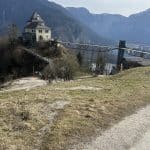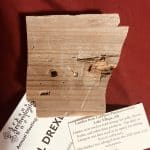So, we’ve covered the trip to Hallstatt in Part I, the stop at Auschwitz-Birkenau in Part II. Now, we’ve made it to the conference and it’s time to get into the research presented there. Part IV is coming and will cover the final day’s trip to the Wieliczka Salt Mine. The conference was held at… Read More
The Southern Arkansas University Research Station of the Arkansas Archeological Survey (AAS-SAU) is located on the SAU campus in Magnolia, Arkansas. The AAS-SAU Research Station is responsible for the archeological resources of 11 counties in southwestern Arkansas. The station territory stretches from the southern edge of the Ouachita Mountains to the Arkansas/Louisiana state Line, and incorporates the Great Bend region of the Red River. The late prehistoric and protohistoric inhabitants within the station territory were members of the Caddoan culture (in the west) and the Plaquemine culture (in the east). Among the important sites in the SAU station territory is Crenshaw, the earliest known Caddoan ceremonial center, and Historic Washington State Park, an antebellum town restored and interpreted by Arkansas State Parks and the Pioneer Washington Restoration Foundation.
Stay Connected...
You can follow the AAS-SAU Research Station through various social media by following the links attached to the title above...or, join our monthly e-mail newsletter list. Send us an e-mail with your name & e-mail/mail address...in the meantime, you can view recent issues of The Kadohadacho News here.
AAS-SAU News

ICAS 2025, Part II: Auschwitz-Birkenau
This is a very different experience from the last post, about Hallstatt, Austria. My work covers a lot of different things, including conflict sites and how sites primarily associated with death and destruction are memorialized and presented to the public. I have published about this some, and it’s an ongoing area of fascination. So, as… Read More

ICAS 2025, Part 1: Hallstatt, Austria
The 5th International Congress on the Anthropology of Salt convenes this week at the University of Rzeszow, in Poland. We were fortunate to have a paper be accepted for presentation there, so I am in Poland at the moment preparing to give the paper tomorrow. As one does not get to Europe with any regularity,… Read More

The 2024 Arkansas Archeological Society Conference
This past weekend was the 2024 Conference of the Arkansas Archeological Society, held in Jonesboro. Both of our station staff attended, and both presented on research projects here in southwest Arkansas. Taylor gave an update on his revisiting of the 1987 Arkansas Archeological Society Training Program at Georgia Lake, in Ouachita County. He’s been making… Read More


